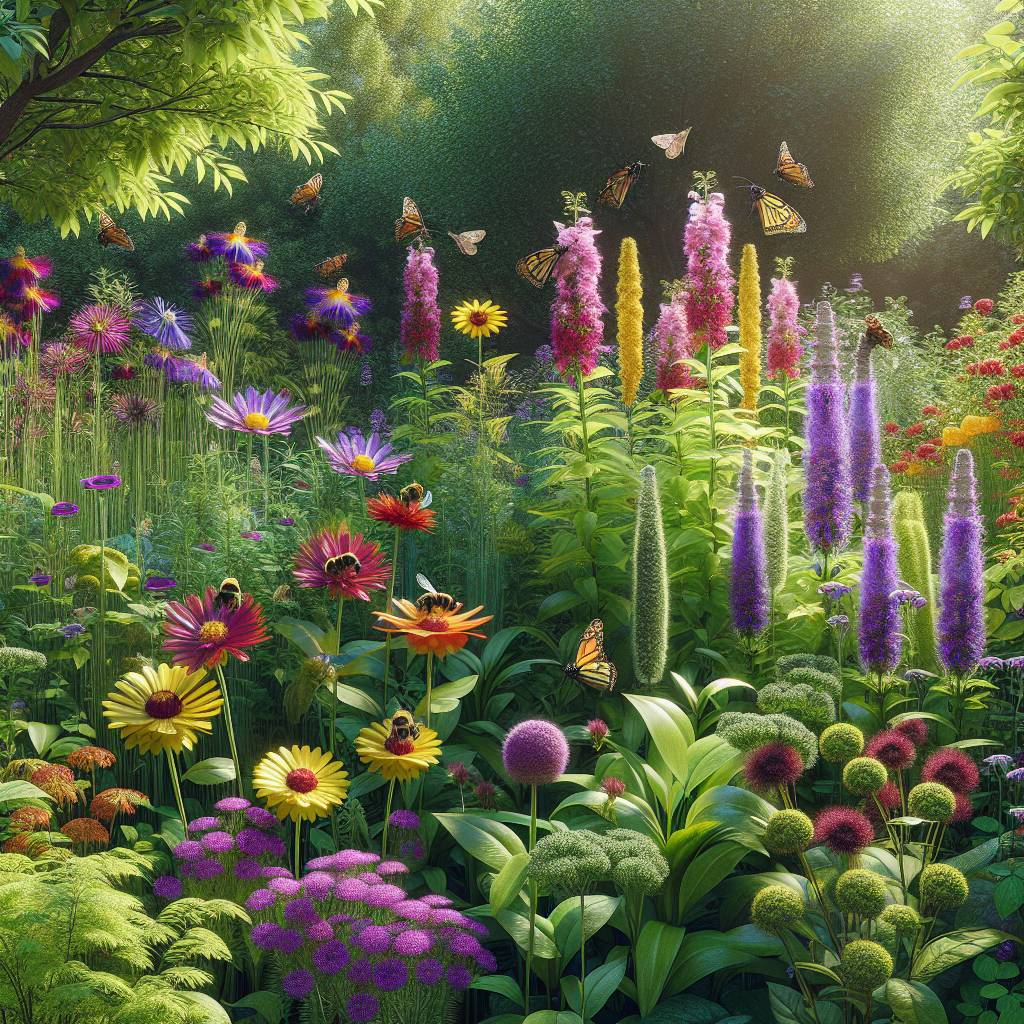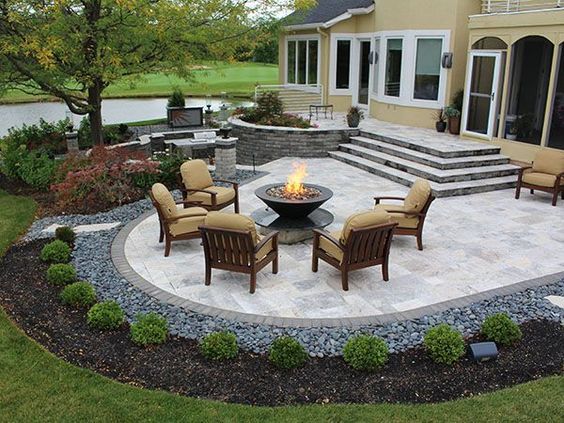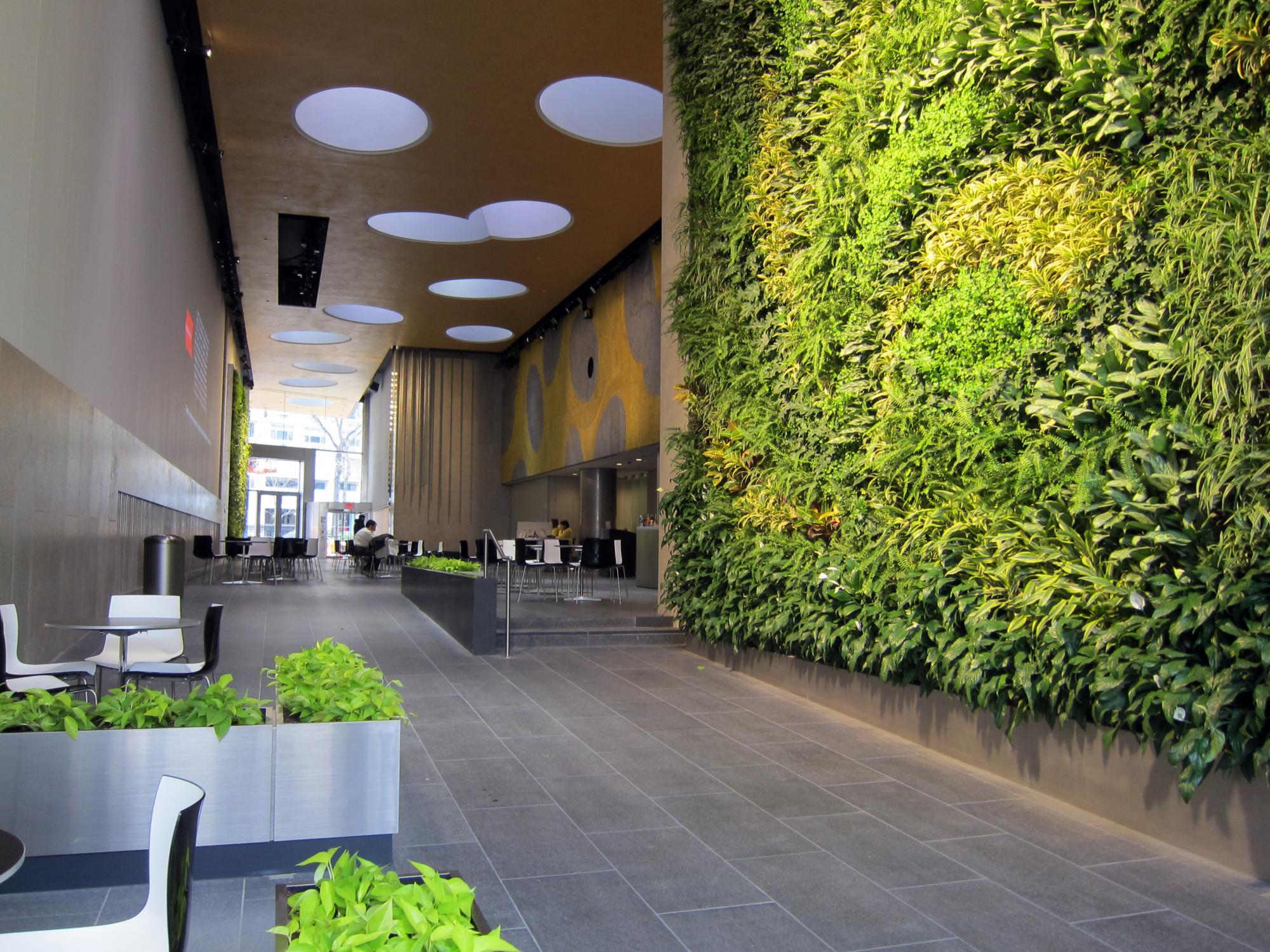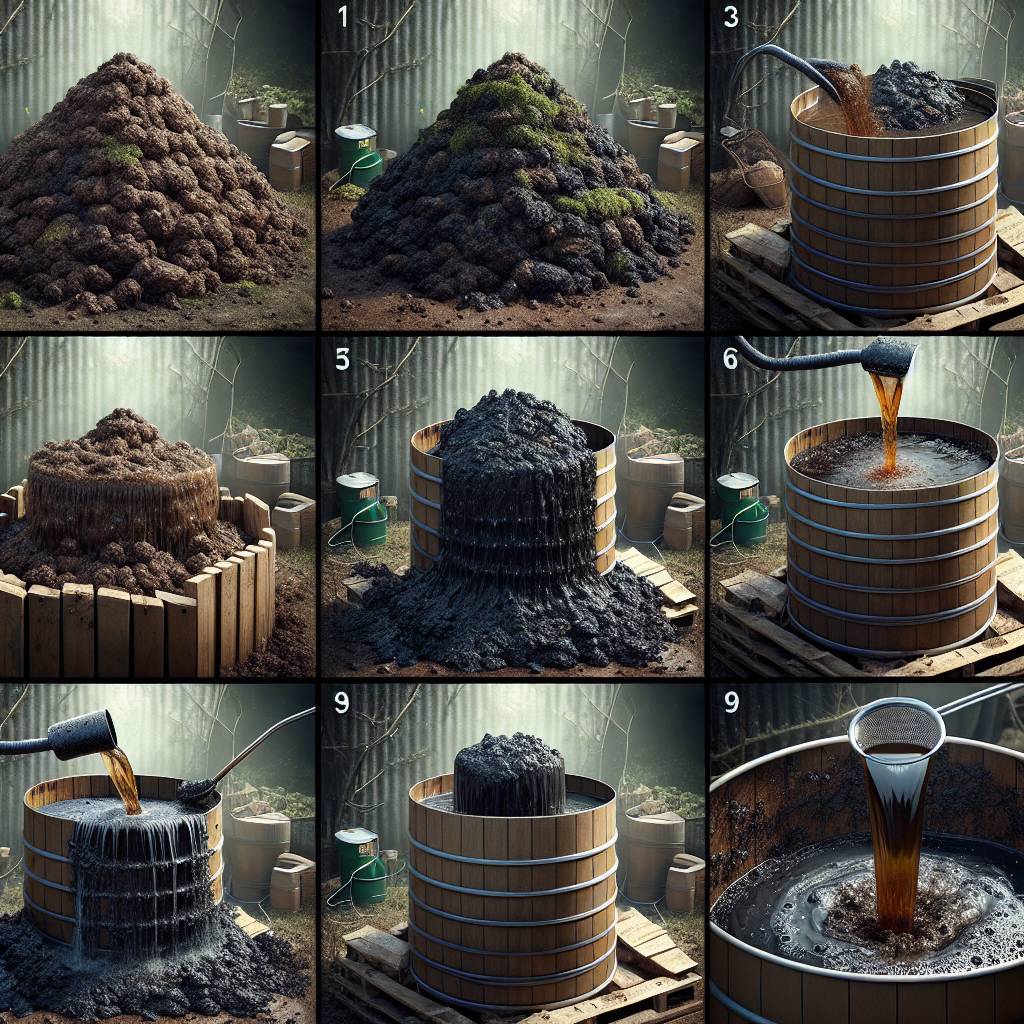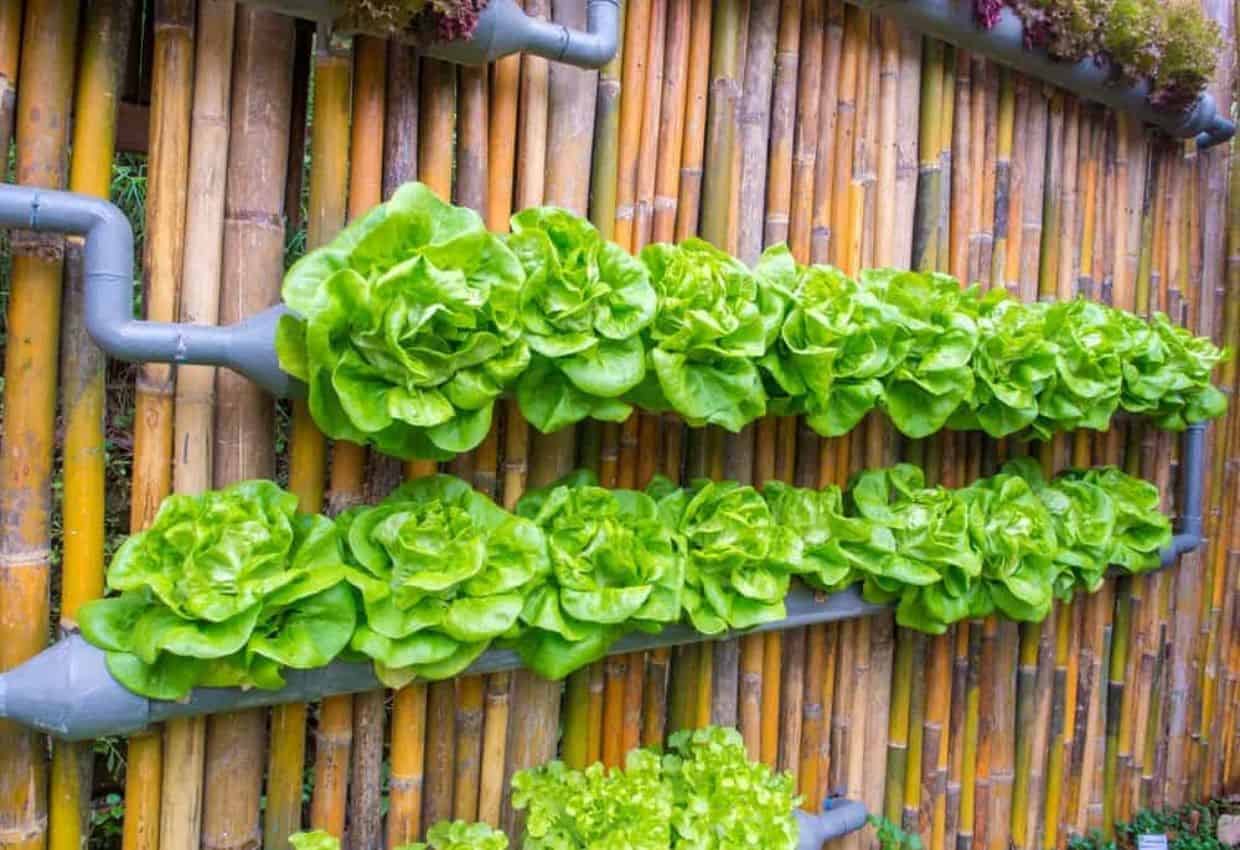Did you know that bees and butterflies are crucial pollinators, aiding in the reproduction of over 85% of the world’s flowering plants? If you’re keen on creating a vibrant and thriving garden while supporting these vital insects, then discovering the best plants, flower beds, and flower seeds to attract bees and butterflies is essential. Not only will these plants bring beauty to your outdoor space, but they also play a significant role in maintaining ecological balance.
Understanding which flowers appeal most to bees and butterflies, as well as other beneficial insects, can make all the difference. By incorporating these plants into your landscape, you can create an inviting habitat for these beneficial creatures while enjoying a visually stunning array of blossoms. So let’s delve into some of the top plant choices that will entice both bees and butterflies to frequent your garden.
Key Takeaways
- Importance of Pollinators: Understanding the crucial role of bees and butterflies in pollination is essential for maintaining a healthy ecosystem.
- Choosing Pollinator-Friendly Plants: Selecting native plants with diverse colors and shapes can attract a variety of pollinators to your garden.
- Designing a Pollinator Garden: Creating a garden with a mix of flowering plants, shrubs, and trees can provide a sustainable habitat for bees and butterflies.
- Best Plants for Attraction: Incorporating specific plants like lavender, sunflowers, and coneflowers can effectively attract bees and butterflies to your garden.
- Creating a Sustainable Habitat: Implementing sustainable gardening practices, such as avoiding pesticides and providing water sources, can support the long-term health of pollinators.
- Incorporating Native Milkweed: Including native milkweed plants in your garden can help support the life cycle of monarch butterflies and contribute to their conservation efforts.
Importance of Pollinators
Ecosystem Balance
Supporting pollinators is crucial for maintaining a balanced ecosystem. When you plant bee and butterfly-friendly flora, you actively contribute to the overall health and stability of the environment. By attracting these pollinators, beneficial insects, you play an essential role in preserving the delicate balance of nature. Imagine your garden as a small piece of a larger puzzle, with each plant acting as a vital part in supporting the intricate web of life.
Diverse plant species attract various pollinators, enhancing biodiversity in your garden. This diversity supports a thriving community of bees, butterflies, and other beneficial insects that are essential for maintaining healthy ecosystems. By planting different types of fragrant flowers with petals and green leaves that appeal to both bees and butterflies, you create an inviting space for these important creatures while also promoting variety within your garden.
Garden Health
Choosing plants that attract bees and butterflies can significantly enhance the overall health of your garden. These pollinator-friendly plants contribute to the vitality and resilience of your garden ecosystem by creating an environment where these creatures can thrive. As they move from flower to flower collecting nectar or pollen, bees and butterflies help pollinate plants, encouraging their growth and reproduction.
Choosing Pollinator-Friendly Plants
Native Varieties
When selecting pollinator plants, it’s crucial to opt for native varieties. These plants support local bee and butterfly populations by providing essential resources such as nectar and pollen. Planting native flora ensures a natural fit for indigenous bees and butterflies, promoting their health and survival. Planting milkweed in North America helps the monarch butterfly population thrive as it is the only plant that monarch caterpillars can feed on.
Native plants also offer benefits like being well-adapted to the local climate, soil conditions, and pest resistance. This makes them low-maintenance options that require minimal watering or fertilization once established. By choosing native flower seeds and flowering plants, you contribute to preserving the natural balance of your local ecosystem while creating a welcoming habitat for pollinators.
Seasonal Blooms
Another vital aspect of selecting pollinator-friendly plants is considering their blooming periods throughout the year. It’s important to choose species with staggered bloom times to ensure a consistent food source for bees and butterflies across different seasons. For example, early spring-blooming crocuses provide much-needed sustenance for emerging bees after winter hibernation.
Flowers for Bees and Butterflies
Nectar-Rich Species
When creating a butterfly garden or bee-friendly space, it’s crucial to select nectar-rich plants. These plants are like flowers that act as a vital food source for bees and butterflies, offering them the sustenance they need to thrive. For instance, plant species such as lavender, sunflowers, and coneflowers are known for their abundant nectar production. By including these in your garden, you can attract various beneficial insects like bumble bees and painted lady butterflies.
Nectar-rich species not only provide nourishment but also play a significant role in sustaining bee and butterfly populations. When these pollinators visit the flowers to collect nectar, they inadvertently transfer pollen from one flower to another, aiding in the process of pollination. This promotes the growth of more flowers while ensuring the continuity of plant species.
In addition to being visually appealing with their vibrant colors and delicate petals, these nectar-rich plants serve as essential elements in any butterfly garden or bee-friendly environment. They create an inviting atmosphere for bees and butterflies by planting foliage and leaves, while contributing to the overall health of local ecosystems.
Pollen Producers
Another important aspect when selecting plants for attracting bees and butterflies is choosing those that are prolific pollen producers. These plants produce ample amounts of pollen and foliage that serve as valuable protein sources for developing bee larvae—the next generation of pollinators—and contribute significantly to maintaining healthy bee populations.
By incorporating pollen-producing plants into your garden or outdoor space, you actively support both bees’ nutritional needs during different stages of their life cycle—adults rely on nectar while larvae need protein from pollen—and help sustain butterfly populations too.
Plants such as black-eyed Susans, milkweed varieties, and wild bergamot are excellent examples of prolific pollen producers that effectively draw in beneficial insects like flies along with bees and butterflies.
Designing a Pollinator Garden
Plant Diversity
A diverse selection of plants is crucial for attracting various bee and butterfly species to your garden. Different perennial pollinators have different preferences, so offering a wide array of plant species ensures diverse resources for them. For example, bees are attracted to native wildflowers such as asters, black-eyed Susans, and coneflowers, while butterflies favor nectar-rich flowers like milkweed and lavender.
Incorporating plant diversity not only caters to the varied preferences of different bee and butterfly species but also creates an inviting environment for a multitude of them. By planting a mix of annuals, perennials, flowering herbs, shrubs, and trees in your garden, you can ensure that there are blooms throughout the growing season. This provides continuous food sources for these essential pollinators.
Habitat Features
Creating diverse habitat features within your garden is essential in providing nesting opportunities for solitary bees and shelter for butterflies. Bees need safe plant zones to build nests while butterflies require sheltered areas during harsh weather conditions or predators’ presence.
Integrating water sources such as shallow dishes with pebbles or rocks and perennial allows bees to drink without drowning. Nesting materials like hollow stems or drilled blocks of wood provide suitable spots for solitary bees to lay their eggs. Additionally,providing patches of bare ground gives ground-nesting bees space to create their nests undisturbed.
Best Plants for Attraction
Annuals and Perennials
Incorporating both annuals and perennials in your garden is crucial. Annual plants like sunflowers, zinnias, and cosmos provide quick bursts of nectar and pollen throughout their short lifespan. On the other hand, perennials such as coneflowers, bee balm, and lavender offer sustained resources for pollinators year after year. By combining perennial and zones, you ensure a continuous supply of food for bees and butterflies across different seasons.
This combination also means that there is always something blooming in your garden. For example, early spring may see the emergence of annuals like sweet alyssum while perennials like salvia start to bloom later in the season. This ensures that bees and butterflies have access to nourishment from early spring all the way through late fall.
Herbs and Shrubs
In addition to annuals and perennials, including herbs such as lavender, rosemary, thyme along with shrubs like buddleia (butterfly bush) can significantly enhance your garden’s appeal to pollinators. These perennial herbs plant in zones 3-9 produce fragrant blooms that are irresistible to bees while providing them with an abundance of nectar sources.
Buddleia or butterfly bushes are particularly attractive due to their large clusters of flowers that come in various colors ranging from purple to pink. Their long flowering period makes them an excellent source of nectar throughout the summer months when many other perennial plants start fading away.
Creating a Sustainable Habitat
Organic Practices
Embracing organic gardening practices is crucial for attracting bees and butterflies to your garden. By avoiding synthetic pesticides, you safeguard the health of these pollinators. Instead, opt for natural pest control methods like companion planting or using neem oil. This preserves the natural balance within the ecosystem and benefits not only bees and butterflies but also other wildlife in your garden.
Furthermore, organic gardening creates a safe haven for bees and butterflies to thrive without exposure to harmful chemicals. It’s important to remember that these beneficial insects are highly sensitive to toxins, so by adopting organic methods and planting perennial plants, you contribute to their well-being while also promoting a healthier environment overall.
Shelter Provision
Offering shelter through dense foliage, designated habitats, and perennial plants plays a significant role in attracting and supporting bee and butterfly populations. Dense vegetation provides hiding spots from predators and refuge from adverse weather conditions such as strong winds or heavy rain. This contributes immensely to the survival of bee colonies as well as hibernating butterflies during harsh environmental circumstances.
Creating sheltered areas within your garden enhances its appeal as a sanctuary for these vital pollinators. Consider incorporating features like brush piles, rock walls, perennial plants, or even purpose-built insect hotels where solitary bees can nest safely. These elements not only provide essential shelter but also add aesthetic value to your garden while serving as an attractive habitat for various species of bees and butterflies.
Incorporating Native Milkweed
Monarch Butterfly Support
Incorporating native perennial milkweed plants in your garden is one of the best ways to attract bees and butterflies. Specifically, milkweed plants support monarch butterflies during their lifecycle stages. Monarch caterpillars rely on milkweed as their sole food source, making it essential for their survival. When adult monarchs are ready to lay eggs, they seek out milkweed as a critical host plant, attracting them to lay their eggs while providing sustenance for their larvae.
Milkweed serves as a crucial element in the life cycle of monarch butterflies. Without this specific perennial plant, these beautiful creatures would struggle to survive and thrive in your garden. By including native milkweed species such as Asclepias incarnata or Asclepias tuberosa, you can create a welcoming environment for monarchs at every stage of development.
Supporting Bee Populations
Aside from being beneficial for butterfly populations, native milkweeds also play a significant role in supporting bee populations by providing a plant for them. Bees are attracted to the nectar-rich flowers of native milkweeds such as Asclepias syriaca or Asclepias speciosa. The presence of these plants provides an essential food source for bees throughout the growing season.
Enhancing Garden for Pollinators
Landscape Integration
. By seamlessly incorporating these plants into your existing landscape design, you can enhance both the visual appeal and ecological functionality of your outdoor space. Whether you choose to integrate them into your current flower beds or create dedicated pollinator gardens, these plants elevate the aesthetic value while providing vital support to insect populations.
By thoughtfully integrating bee-and-butterfly-friendly flora into your landscape design, you achieve a harmonious balance between beauty and ecological significance. For instance, planting native milkweed not only adds vibrant colors but also attracts monarch butterflies due to its importance as their primary larval food source. This seamless integration ensures that your garden becomes an inviting haven for essential pollinators without compromising on aesthetics by planting.
Flower Selection
Carefully selecting plant flowers with specific shapes, colors, or scents is key when aiming to attract bees and butterflies. Different species have unique preferencesColor patterns, and fragrance. The right flower selection can maximize attraction by appealing to various sensory cues that guide pollinators towards nourishing blooms in your garden.
For example, planting bright yellow sunflowers can entice bees with their large pollen-rich centers while attracting colorful butterflies like swallowtails with their nectar-producing flowers. Understanding the nuanced preferences of different bee-and-butterfly species enables strategic plant choices that effectively draw them into your garden.
Encouraging Garden Biodiversity
Including a wide variety of plant flora in your garden is essential when aiming to attract bees and butterflies. A diverse range of flowering plants provides an extensive buffet of nectar sources, catering to the specific needs of different bee and butterfly species. For instance, planting lavender, sunflowers, bee balm, butterfly bush, and coneflowers can entice various pollinators due to their distinct shapes, colors, and nectar-producing capabilities.
Moreover, a rich assortment of flora offers an inclusive environment that appeals to an array of bee-and-butterfly visitors. By incorporating a broad spectrum of flowering plants such as asters, milkweed, and lupines, you create a welcoming space for different types of pollinators. This ensures that there are ample plant resources available for all the visiting insects.
Summary
You’ve learned about the vital role of pollinators and how to attract them to your garden by planting. By choosing the right plants and creating a sustainable habitat, you can support the dwindling bee and butterfly populations. Remember, it’s not just about adding pretty flowers to your garden; it’s about providing a safe and nourishing environment for these essential creatures.
Now it’s time to take action! Get your hands dirty and start planting bee and butterfly-friendly flora. Share this knowledge with friends and family, and together, let’s make our gardens vibrant sanctuaries for pollinators. Your small efforts can make a big difference in preserving these valuable species. Let’s create a world where bees, butterflies, and plants thrive alongside us.
Frequently Asked Questions
What is the importance of pollinators?
Pollinators, like bees and butterflies, play a crucial role in our ecosystem by facilitating the reproduction of plants. They help in the production of fruits, seeds, and new plants while maintaining biodiversity.
How do I choose pollinator-friendly plants?
Select native plants with vibrant colors and diverse shapes to attract a variety of pollinators. Avoid using pesticides or herbicides that can harm these beneficial insects and plant.
Which flowers are best for attracting bees and butterflies?
Plants such as lavender, sunflowers, coneflowers, and bee balm are excellent choices for attracting bees and butterflies due to their rich nectar sources and appealing blooms.
What are some tips for designing a pollinator garden?
Create clusters of flowers to provide easy access for pollinators. Incorporate a mix of blooming seasons and plant to ensure a consistent food source throughout the year.
What are some examples of best plants for attracting bees and butterflies?
Consider planting wild bergamot, black-eyed susan, milkweed varieties, salvia, and butterfly bush as they are known to be highly attractive to both bees and butterflies.
How can I enhance my garden to better support pollinators?
Provide nesting sites such as bare ground patches or wood piles. Also include water sources like shallow dishes filled with pebbles and plants where insects can safely drink without drowning.
Why is encouraging garden biodiversity important for supporting pollinators?
Diverse plant species attract more types of pollinators which leads to healthier ecosystems. Biodiversity also helps buffer against environmental changes ensuring long-term sustainability.
